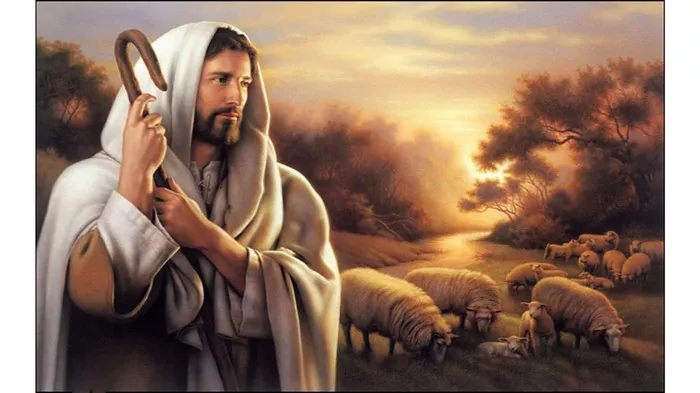The triumphant entry of Jesus into Jerusalem astride a donkey is an iconic moment in Christian history, immortalized in scripture and art. Yet, the significance behind this humble mode of transportation extends far beyond mere logistics. In this article, we delve into the profound symbolism behind Jesus’s choice of a donkey and explore the theological, cultural, and historical contexts that imbue this event with enduring meaning.
The Fulfillment of Prophecy
Central to understanding Jesus’s decision to ride a donkey is its fulfillment of Old Testament prophecy. In the book of Zechariah (9:9), written centuries before Jesus’s birth, it is prophesied: “Rejoice greatly, Daughter Zion! Shout, Daughter Jerusalem! See, your king comes to you, righteous and victorious, lowly and riding on a donkey, on a colt, the foal of a donkey.” By riding a donkey into Jerusalem, Jesus consciously fulfills this prophecy, signaling to his followers and the Jewish populace that he is the promised Messiah.
Subverting Expectations
The choice of a donkey as a mode of transportation for a triumphant entry into a city was highly unconventional, especially in the context of ancient Near Eastern cultures where kings and conquerors typically rode horses or chariots. By deliberately selecting a humble donkey, Jesus subverted the expectations of the people regarding the nature of his kingship. Rather than embracing worldly power and grandeur, Jesus demonstrates humility and servitude, embodying the values of the Kingdom of God.
Cultural and Historical Context
To grasp the full significance of Jesus’s donkey ride, it is essential to consider the cultural and historical context of first-century Palestine. Donkeys were common beasts of burden in the region, utilized by peasants and the lower classes for agricultural work and transportation. Their association with the common people and their humble status in society underscores Jesus’s identification with the marginalized and downtrodden.
Furthermore, the backdrop of Jerusalem during the Passover festival adds another layer of meaning. Passover was a time of heightened political tension, as Jews from all over the Roman Empire gathered in Jerusalem to commemorate their liberation from slavery in Egypt. The choice of a donkey as a symbol of liberation and deliverance would not have been lost on the Jewish crowds, many of whom longed for a messianic figure to free them from Roman oppression.
A Message of Peace
In addition to fulfilling prophecy and subverting expectations, Jesus’s entry into Jerusalem on a donkey carries a profound message of peace. In contrast to the military parades of conquering rulers, Jesus’s mode of transportation symbolizes his commitment to peace and reconciliation. The donkey, traditionally associated with peace rather than war, communicates Jesus’s mission to bring about a kingdom characterized by justice, mercy, and non-violence.
Theological Implications
From a theological perspective, Jesus’s choice of a donkey aligns with his broader mission of inaugurating the Kingdom of God. Throughout his ministry, Jesus consistently challenged societal norms and expectations, inviting his followers to embrace a radical vision of God’s reign characterized by love, compassion, and humility. The image of Jesus riding a donkey serves as a powerful symbol of this counter-cultural message, inviting us to reimagine what true greatness and kingship entail.
Moreover, Jesus’s donkey ride foreshadows his ultimate act of humility and sacrifice on the cross. Just as he entered Jerusalem on a humble donkey, so too would he willingly submit himself to death on a cross, demonstrating the depth of God’s love for humanity. In this sense, the donkey becomes a symbol of redemption and salvation, pointing forward to the transformative power of Christ’s resurrection.
Contemporary Relevance
While the events of Jesus’s entry into Jerusalem took place over two millennia ago, the symbolism of his donkey ride remains deeply relevant in the modern world. In a society obsessed with power, status, and material wealth, the example of Jesus challenges us to reevaluate our priorities and embrace a posture of humility and service. Like Jesus, we are called to identify with the marginalized, advocate for justice, and work towards the establishment of God’s Kingdom on earth.
Furthermore, the image of Jesus riding a donkey serves as a reminder of the transformative potential of non-violent resistance in the face of oppression and injustice. In a world marked by conflict and division, Jesus’s message of peace and reconciliation offers a compelling alternative to the cycle of violence and retaliation.
Conclusion
The symbolism behind Jesus’s decision to ride a donkey into Jerusalem is rich and multi-layered, reflecting his identity as the promised Messiah, his commitment to humility and servanthood, and his message of peace and reconciliation. By intentionally subverting expectations and embracing the humble donkey as his steed, Jesus challenges us to reconsider our understanding of power, greatness, and kingship. As we reflect on this iconic moment in Christian history, may we be inspired to follow in the footsteps of the one who came not to be served, but to serve, and to give his life as a ransom for many.


